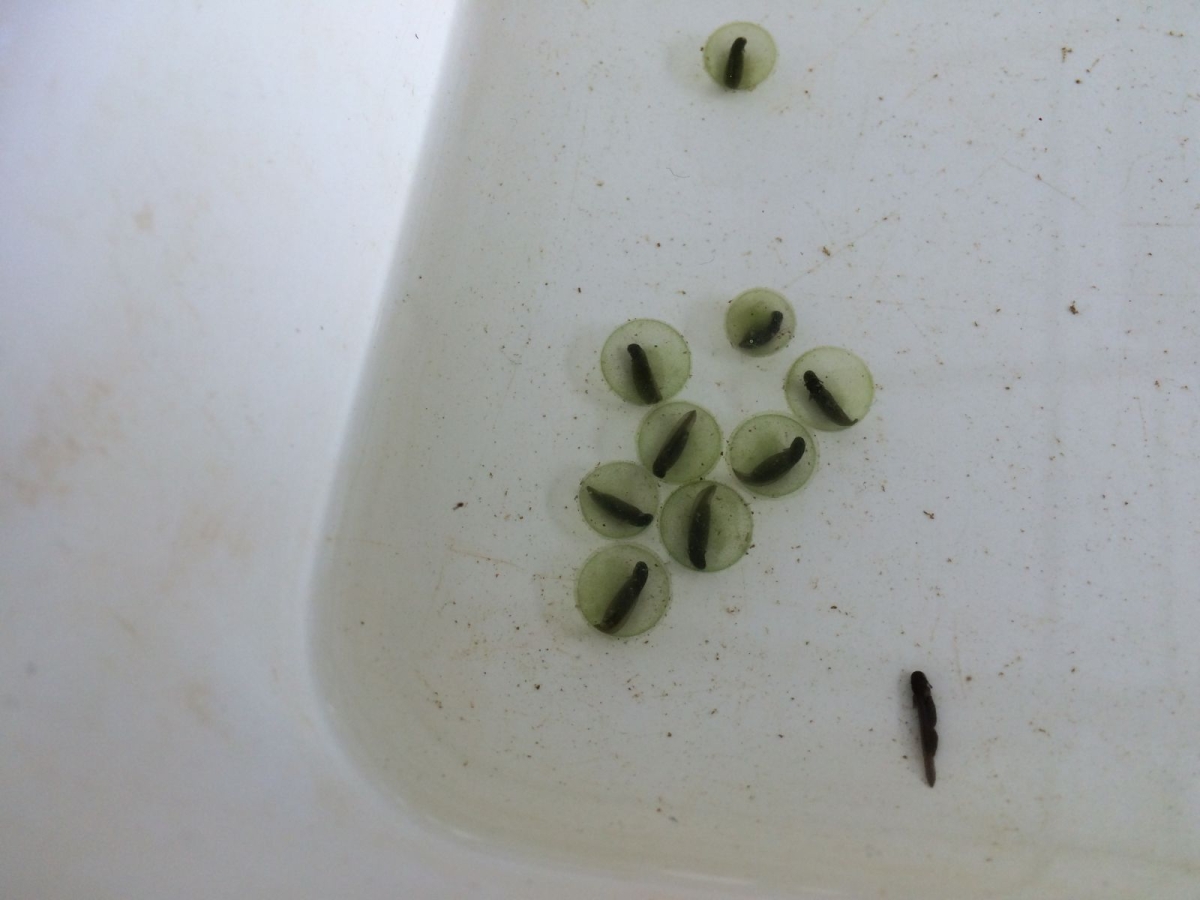Spotted Salamander Symbiosis: Content Primer
Modern Research, Part II
Although the suspicion of a mutualistic relationship continued, no other experimentation delved further into the exact nature and intimacy of the relationship until Kerney probed a bit further in 2011. Kerney postulated that the algal species, Oophila amblystomatis (Oa), was actually intertwined within the spotted salamander, Ambystoma maculatum (Am) embryo and not just on the surface of the egg or egg case.
To prove his point, Kerney used a simple fluorescence technique to check for photosynthetic activity, or chlorophyll, in the tissues of the embryo. Voila! Under fluorescence microscopy, the embryos exhibited small red dots, telltale signs of photosynthetic production. These algae had not only colonized the egg, but they had managed to colonize the salamander. (The alga was not on the outside of the egg but inside the animal.) How is that possible in a vertebrate animal?
Kerney continued his experiments to see if the algae had in fact penetrated the cells of the embryo. He carefully prepared the cells for transmission electron microscopy (TEM). Using the TEM, he validated that the algae cells were inside the cells of the salamander.9 But, how and when does this colonization take place? And, what is the true nature of a potentially mutualistic relationship between an algal species and a vertebrate animal?
Kerney’s experiments confirmed the presence of Oa in the Am embryo as an endosymbiont (an organism that lives within the cells of another organism).

Erin Graham, a graduate student at Temple University in Philadelphia, took up the evidence provided by Kerney and others to figure out if there was a “direct relationship” between the presence of the alga and growth of the salamander. She also wanted to find out if the alga provided other benefits to the growing salamanders, beyond supplying oxygen. She developed an experiment to compare salamander “egg masses maintained in light, darkness, and with a photosynthesis inhibitor” thinking she would find a direct association between more algal cells and the growth of the salamander embryos related to the amount of light.10
Graham postulated that the benefit for Oa was the nitrogen-containing waste products coming from the Am embryo, which help fuel algae growth. But, the question lingered about sugar (composed of carbon, hydrogen, and oxygen) produced from photosynthesis by the algae. Oxygen production from photosynthesis had been shown to benefit the embryos in other studies done since 1940 but linking the benefit of algal sugar production to the embryo would break new ground in vertebrate symbiosis. Gilbert (1944) had also established that Oa is able to penetrate the egg cases within hours of deposition by the female and congregate in the inner membrane of the eggs.7
As a reminder, in the process of photosynthesis, plants use energy from sunlight, carbon dioxide gas from the atmosphere, and water to produce sugar (glucose) and oxygen.
CO2 + H20 + light energy -----------> Sugar (C6H1206) + 02
Hypothesizing that oxygen may not be the primary benefit for the growing salamanders, Graham focused on carbon. She tracked radioactively labeled carbon to define the pathway from algae to embryo and to investigate whether the main benefit for the embryo was the production of oxygen or the production of sugar.10
Graham’s study shows a direct positive relationship between alga and salamander embryo growth. The relationship is potentially mutualistic since the algae use the salamanders as a host and the growing salamanders benefit as the alga increase oxygen, provide nutrition from the photosynthetic process, and may even remove waste in the egg. Her study is also the first to clearly show that algal produced sugar is translocated into the cells of salamander embryos. It is estimated that there is production of some sugars that translocate to the embryo but only about 13% of production. This pales in comparison to zooxanthellae algae that can produce sugars in coral and up to 90–90% is shared.



